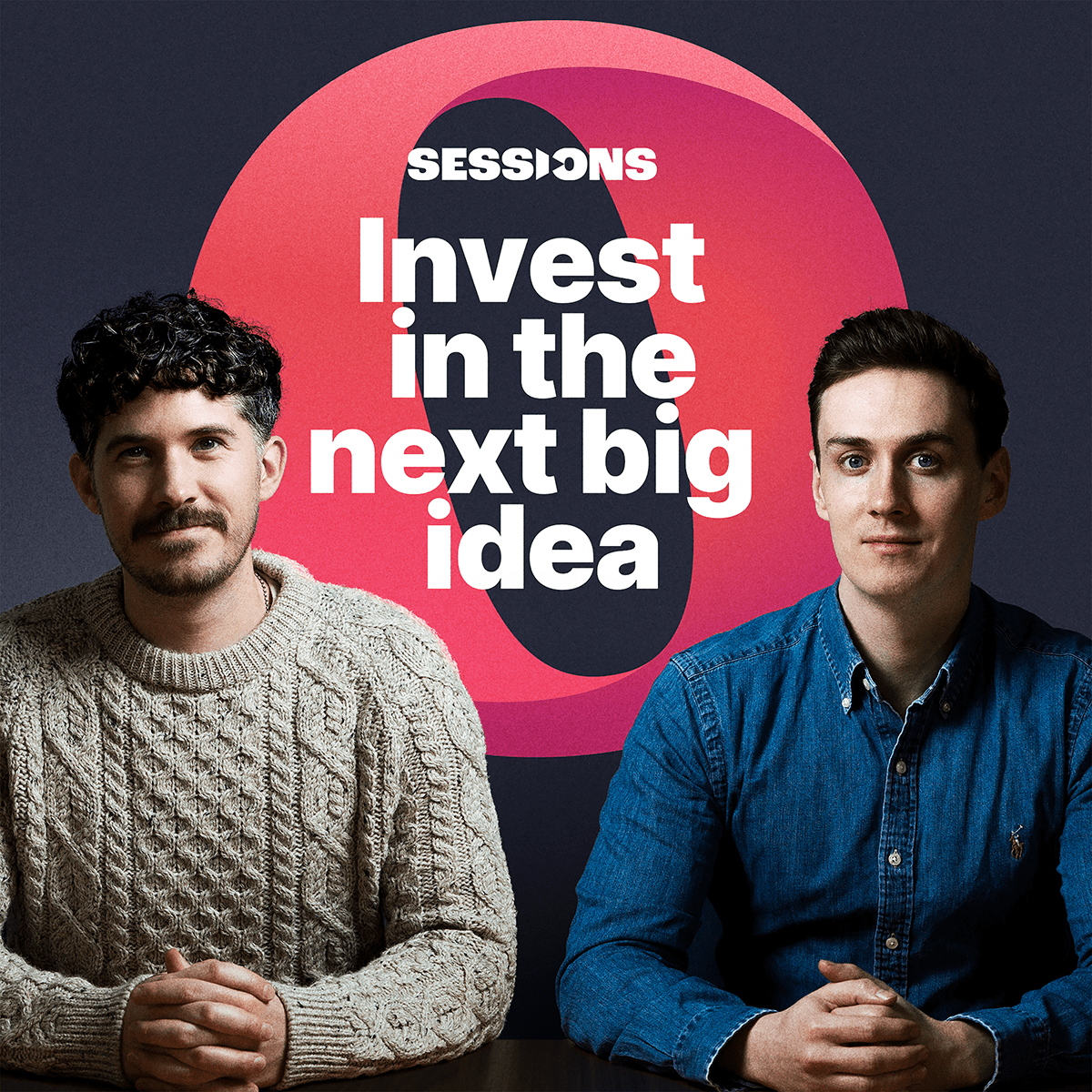Brandon Rakszawski, VP, Director of Product Management at VanEck, joins Opto Sessions to discuss the VanEck Morningstar Wide Moat ETF. He explains the principles behind an economic moat, how the ETF’s benchmark index selects stocks, and why this strategy can work across market cycles.
LINKS TO THE INTERVIEW:
Brandon Rakszawski is VP, Director of Product Management at asset management company VanEck, where he provides oversight and coordination of ETF product development. He provides industry, regulatory and market research; pipeline management; and launch cycle implementation.
Before joining VanEck as a product manager, Rakszawski began his career as a marketing specialist at Federated Investors. He earned a Bachelor of Science in finance and marketing at Slippery Rock University of Pennsylvania, and has FINRA Qualifications 24, 7 and 63.
Defending the Castle
For Rakszawski, the VanEck Morningstar Wide Moat ETF [MOAT] boils down to quality companies. This, he explains, means “US stocks that are really high-quality, possess a competitive advantage and are trading at attractive prices”. Stocks like these, he says, have a track record of outperforming the market over the long term.
“It all comes down to identifying companies with moats: high-quality businesses that are set to stand the test of time,” says Rakszawski.
“Those companies that can build some sort of advantage that can fend off competition, help prevent or delay the erosion of their profitability in the future — those are the companies that you want to focus on and to hold in your portfolio over the long term.”
Morningstar’s research underpins the fund’s strategy, as does the concept of the economic moat. This concept was first popularised by Warren Buffett, though Rakszawski emphasises that Buffett has no direct influence on the fund’s strategy. Buffett’s moat concept compares the competitive advantages that certain companies build to protect their long-term profit and market share — such as patents or access to cheap raw materials — to a moat surrounding a mediaeval castle, protecting it from marauders.
MOAT tracks the Morningstar Wide Moat Focus Index, which itself holds stocks that Morningstar rates as having wide economic moats, trading at the lowest current market price and/or fair value ratios.
“Those companies that can build some sort of advantage that can fend off competition, help prevent or delay the erosion of their profitability in the future — those are the companies that you want to focus on and to hold in your portfolio over the long term,” says Rakszawski.
The strategy also factors in the desirability of companies with wide moats. “You want to target companies that are undervalued relative to the other wide moat companies,” says Rakszawski.
He gives the example of Campbell Soup [CPB]; the company has deep market penetration and a strong brand, but may at given times trade at or below its fair value. When this happens, such stocks are added to the index “in a very systematic, rules-based way”.
Under MOAT’s Hood
Morningstar’s analysts apply one of three moat ratings to every company based on its economic advantages: no moat, implying either no economic advantage or, at best, a fleeting one; narrow moat, which Rakszawski emphasises is a “very strong rating”, but which indicates that Morningstar is unconvinced as to how durable a given economic advantage is; and wide moat: these are the companies that are eligible for the Wide Moat Focus Index and, in turn, MOAT.
Fair value is an estimate by Morningstar’s analysts of the present-day value of a company’s stock based on its predicted future cash flow. Morningstar factors a company’s moat into these projections; as Rakszawski points out, it is a “robust” system.
Individual stocks in the index are equal-weighted. This allows the impact of favourable valuations to be expressed more freely.
“If companies have sold off, their prices are lower, they are cheaper. They are going to have a lower weighting in a market cap weighted index… So you start to lose some of the impact of the valuation selection screen.”
The fund itself, says Rakszawski, would never hold fewer than 40 stocks, and tends to hold 45-55 at any given time. Its sector weighting can vary significantly. Of the 145 or so wide-moat companies in the US at any given time, the index’s methodology selects the most attractively priced at every quarterly review.
This means that particular sectoral exposures fluctuate as different sectors come into and out of favour. However, individual sectors are capped at approximately 40% in order to prevent over-exposure to individual sectors. As of 31 October the top-three sectors by weighting were health care (20%), financials (19.2%) and industrials (15.8%). The top-three holdings were Comcast [CMCSA], Alphabet [GOOGL] and Wells Fargo [WFC].
“If companies have sold off, their prices are lower, they are cheaper. They are going to have a lower weighting in a market cap weighted index… So you start to lose some of the impact of the valuation selection screen.”
The fund’s US focus is, Rakszawski explains, due in part to its reliance on Morningstar, a US-based company with a primarily US-focused team of analysts. Additionally, there are a greater number of wide moat companies in the US, as the market is relatively mature.
Cycles and Styles
The market environment dictates the stocks that will be added to the strategy. Rakszawski explains that Campbell Soup was added in late 2021 when market attention was on growth stocks, and consumer staples became cheaper.
Then, in 2022, inflation shifted market focus onto defensive value stocks; Campbell Soup started trading above fair value and the index’s rules took profit. Simultaneously, growth stocks became cheaper. During this shift, Nvidia [NVDA] traded below Morningstar’s fair value and was added to the index, meaning that more profit was banked when it surged thanks to the artificial intelligence boom that began in late 2022.
Rakszawski stresses that this strategy is a long-term one that is built to work “over market cycles”. Typically, the stage of the market cycle dictates the style (i.e., value or growth) of stocks that will outperform; the fund, says Rakszawski, “is style agnostic. It is really the wide moat companies at attractive valuations. The style exposure works itself out.”
“One aspect about this strategy that many of our clients and investors like is that it offers large blend exposure that is constantly reassessing valuation.” This means that investors do not need to consider the valuations at which they are entering a position; the index and its methodology works that out for them.
MOAT closed 31 October up 11.3% year-to-date.
Disclaimer Past performance is not a reliable indicator of future results.
CMC Markets is an execution-only service provider. The material (whether or not it states any opinions) is for general information purposes only, and does not take into account your personal circumstances or objectives. Nothing in this material is (or should be considered to be) financial, investment or other advice on which reliance should be placed. No opinion given in the material constitutes a recommendation by CMC Markets or the author that any particular investment, security, transaction or investment strategy is suitable for any specific person.
The material has not been prepared in accordance with legal requirements designed to promote the independence of investment research. Although we are not specifically prevented from dealing before providing this material, we do not seek to take advantage of the material prior to its dissemination.
CMC Markets does not endorse or offer opinion on the trading strategies used by the author. Their trading strategies do not guarantee any return and CMC Markets shall not be held responsible for any loss that you may incur, either directly or indirectly, arising from any investment based on any information contained herein.
*Tax treatment depends on individual circumstances and can change or may differ in a jurisdiction other than the UK.
Continue reading for FREE
- Includes free newsletter updates, unsubscribe anytime. Privacy policy


